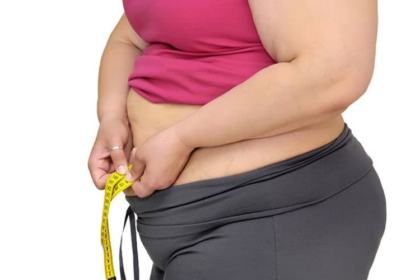Embracing a healthy diet is a powerful journey toward overall well-being, and heavyset women can embark on this path with confidence and empowerment. This guide aims to provide practical insights, nutritional tips, and positive strategies to support heavyset women in cultivating a sustainable, nourishing approach to their dietary choices.

1. Emphasizing Nutrient-Rich Foods:
A healthy diet for heavyset women centers around nutrient-dense foods. Focus on incorporating a variety of fruits, vegetables, lean proteins, whole grains, and healthy fats. These choices provide essential vitamins, minerals, and antioxidants that contribute to overall health.
2. Finding Joy in Balanced Meals:
Enjoying a balanced meal is key. Include a mix of macronutrients – carbohydrates, proteins, and fats – in each meal to promote satiety and sustained energy. This balance helps regulate blood sugar levels and supports healthy weight management.
3. Portion Control and Mindful Eating:
Practicing portion control and mindful eating are crucial components. Be attentive to hunger and fullness cues, savor each bite, and avoid distractions during meals. These habits promote a healthier relationship with food and prevent overeating.
4. Hydration for Health:
Water is an unsung hero in any healthy diet. Staying adequately hydrated supports metabolism, aids digestion, and helps control appetite. Make water your beverage of choice, and consider infused water or herbal teas for added flavor without added sugars.
5. Building Sustainable Habits:
Sustainability is key to long-term success. Instead of drastic changes, focus on building small, sustainable habits. Gradual adjustments are more likely to become ingrained in daily life, fostering lasting wellness.
6. Celebrating Body Positivity:
Embrace body positivity as an integral part of a healthy lifestyle. Focus on what your body can do and the strength it possesses. A positive mindset can contribute to a more joyful and sustainable approach to wellness.
7. Seeking Support and Professional Guidance:
Connect with a supportive network and consider seeking guidance from healthcare professionals or registered dietitians. Tailored advice can provide personalized strategies for a healthy diet that aligns with individual needs and goals.
8. Exploring Enjoyable Physical Activities:
Incorporate physical activities that bring joy. Whether it’s dancing, walking, swimming, or any other activity, finding enjoyment in movement supports both physical and mental well-being.
9. Mind-Body Connection:
Recognize the mind-body connection in your wellness journey. Practices such as yoga or meditation can help cultivate mindfulness, reduce stress, and contribute to a positive relationship with food.
10. Setting Realistic Goals:
Set realistic and achievable goals that go beyond the scale. Focus on holistic well-being, such as improved energy levels, better sleep, and enhanced mood. Celebrate these victories alongside any changes in weight.
Losing lower body fat for heavyset women involves a combination of targeted exercises, a balanced diet, and lifestyle adjustments. Here’s a comprehensive guide tailored to focus on the lower body:
1. Cardiovascular Exercise:
- Brisk Walking or Jogging: Engage in regular brisk walking or jogging to burn calories and stimulate fat loss in the lower body.
- Cycling: Incorporate cycling, either outdoors or on a stationary bike, to target the muscles in the legs and hips.
2. Strength Training:
- Leg Exercises: Include strength training exercises for the lower body, such as squats, lunges, leg presses, and calf raises. These exercises help build muscle, which contributes to fat burning.
- Resistance Training: Use resistance bands or weights to add intensity to lower body exercises and promote muscle development.
3. Targeted Exercises:
- Lunges: Perform various lunging exercises, including forward lunges, reverse lunges, and lateral lunges, to engage different muscles in the lower body.
- Squats: Incorporate squats, focusing on proper form to activate the muscles in the thighs and buttocks.
- Leg Raises: Include leg raises to work the muscles in the hips and lower abdomen.
4. Cardio Intervals:
- Combine cardiovascular exercise with high-intensity interval training (HIIT). Short bursts of intense exercise followed by periods of rest can boost metabolism and burn more calories.
5. Balanced Diet:
- Whole Foods: Focus on a diet rich in whole foods, including fruits, vegetables, lean proteins, and whole grains.
- Portion Control: Be mindful of portion sizes to manage overall calorie intake. Eating smaller, balanced meals throughout the day can help regulate blood sugar levels.
6. Hydration:
- Stay adequately hydrated. Water is crucial for overall health and can aid in the fat-burning process.
7. Consistent Exercise Routine:
- Establish a consistent exercise routine that includes both cardiovascular and strength training exercises. Aim for at least 150 minutes of moderate-intensity exercise per week.
8. Rest and Recovery:
- Ensure adequate rest and recovery between workouts. Muscles need time to repair and grow stronger.
9. Mindful Eating:
- Adopt mindful eating habits to avoid overeating. Pay attention to hunger and fullness cues, and savor each bite.
10. Medical Consultation:
- Before starting any new exercise or diet plan, consult with a healthcare professional. They can provide personalized advice based on your health condition and goals.
11. Positive Mindset:
- Cultivate a positive mindset. Celebrate progress, focus on the benefits of a healthy lifestyle, and avoid overly emphasizing appearance-related goals.
How to lose belly fat in older women
Losing belly fat in older women involves a combination of targeted exercises, a healthy diet, and lifestyle adjustments. Here’s a comprehensive guide to help older women reduce belly fat:
1. Balanced Diet:
- Nutrient-Rich Foods: Focus on whole, nutrient-dense foods, including fruits, vegetables, lean proteins, whole grains, and healthy fats. Limit processed foods and refined sugars.
- Portion Control: Be mindful of portion sizes to manage overall calorie intake. Eating smaller, balanced meals throughout the day can help regulate blood sugar levels.
2. Hydration:
- Drink plenty of water throughout the day. Staying hydrated supports digestion and can help control appetite, preventing unnecessary snacking.
3. Regular Exercise:
- Cardiovascular Exercise: Engage in regular aerobic exercises like brisk walking, cycling, swimming, or dancing to burn calories and improve overall cardiovascular health.
- Strength Training: Include strength training exercises to build muscle mass. Lean muscle helps boost metabolism, contributing to fat loss.
- Core Exercises: Incorporate specific abdominal exercises such as crunches, planks, and leg raises to target the muscles in the abdominal area.
4. Healthy Lifestyle Choices:
- Adequate Sleep: Prioritize quality sleep. Lack of sleep can disrupt hormonal balance and contribute to weight gain, especially around the abdomen.
- Stress Management: Practice stress-reducing techniques such as meditation, deep breathing, or yoga. Chronic stress can lead to increased abdominal fat.
- Limit Alcohol Intake: Moderation in alcohol consumption is important, as excess alcohol can contribute to belly fat.
5. Hormone Balance:
- Consult with a healthcare professional to discuss hormonal changes that may occur during menopause. Hormonal fluctuations can influence fat distribution, and personalized strategies may be recommended.
6. Mindful Eating:
- Eat mindfully, paying attention to hunger and fullness cues. Avoid emotional eating and savor each bite. This can prevent overeating and promote a positive relationship with food.
7. Consistency and Patience:
- Understand that losing belly fat takes time, especially in older age. Be consistent with your efforts and remain patient, focusing on sustainable lifestyle changes.
8. Medical Check-Up:
- Before starting any new exercise or diet plan, consult with a healthcare professional. They can provide personalized advice based on your health condition and goals.
9. Social Support:
- Seek support from friends, family, or a fitness buddy. Having a support system can provide motivation and encouragement on your journey.
10. Holistic Approach:
- Embrace a holistic approach to health. Prioritize overall well-being, including mental and emotional aspects. A healthy, positive mindset contributes to successful, sustainable weight management.
How to lose belly fat fast without Exercising
Losing belly fat without exercising requires a focus on dietary choices, lifestyle adjustments, and other non-exercise strategies. Keep in mind that rapid weight loss isn’t always sustainable, and a balanced, gradual approach is generally healthier. Here are some tips to help you lose belly fat without exercising:
1. Balanced Diet:
- Whole Foods: Prioritize whole, nutrient-dense foods such as fruits, vegetables, lean proteins, whole grains, and healthy fats.
- Portion Control: Be mindful of portion sizes to avoid overeating. Eating smaller, more frequent meals can help regulate blood sugar levels.
2. Hydration:
- Drink plenty of water throughout the day. Staying hydrated can help control appetite and support overall health.
3. Limit Processed Foods and Sugars:
- Reduce your intake of processed foods and sugary beverages. These can contribute to excess calorie consumption and fat storage, particularly in the abdominal area.
4. Fiber-Rich Foods:
- Include fiber-rich foods in your diet, such as whole grains, legumes, fruits, and vegetables. Fiber helps with digestion and can contribute to a feeling of fullness.
5. Protein Intake:
- Include protein-rich foods in your meals. Protein helps maintain muscle mass and can contribute to a feeling of satiety, reducing overall calorie intake.
6. Healthy Fats:
- Choose healthy fats such as avocados, nuts, seeds, and olive oil. These fats can provide essential nutrients and support a sense of fullness.
7. Manage Stress:
- Chronic stress can contribute to belly fat. Practice stress-reducing techniques such as meditation, deep breathing, or yoga to help manage stress levels.
8. Adequate Sleep:
- Lack of sleep has been linked to weight gain, especially in the abdominal area. Aim for 7-9 hours of quality sleep each night.
9. Mindful Eating:
- Pay attention to what and how you eat. Avoid eating in front of screens, and savor each bite. Mindful eating can prevent overeating.
10. Stay Consistent:
- Consistency is key. Adopting healthy eating habits as part of your lifestyle, rather than a temporary fix, is more likely to lead to lasting results.
11. Medical Consultation:
- Before making significant changes to your diet, especially if you have existing health conditions, consult with a healthcare professional for personalized advice.
12. Positive Mindset:
- Cultivate a positive mindset. Rapid weight loss isn’t always healthy or sustainable. Focus on overall well-being and making choices that support your health.
13. Intermittent Fasting:
- Some individuals find success with intermittent fasting, which involves cycling between periods of eating and fasting. This approach may help reduce calorie intake.
14. Limit Alcohol Intake:
- Alcohol can contribute to excess calorie consumption. Limit your alcohol intake to support your weight loss goals.
Conclusion:
For heavyset women, nurturing wellness through a healthy diet is a journey of self-care and self-love. By embracing nutrient-rich choices, finding joy in balanced meals, and building sustainable habits, every woman can embark on a path to long-lasting well-being. Remember, it’s not about conforming to external standards but about prioritizing health, confidence, and the unique strength each individual brings to their own wellness journey.





